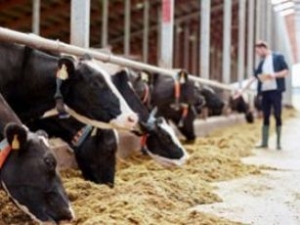News
CME: Feeder Cattle Auction Receipts for October Up 4.3%

Based on reports issued in October and the week ending 2 November (with most of that market activity actual transpiring in the last few days of October), total feeder cattle trade volume was higher than a year earlier. The calculation is somewhat complicated by the inclusion of the week ending 2 November, since this leads to a total based on five weeks of trade, compared to only four weeks of trade in October 2017.
USDA-AMS collects data for three feeder cattle marketing channels; auctions, direct trade that is exclusive of auction barns, and internet or video based auctions. The AMS report is not concerned about the source or the destination of the cattle traded, so the issue of cattle moving from pastures to auction barns and then back out to pastures weakens the relationship between feeder cattle market receipts and feedlot placements. Flows of imported feeder cattle from Mexico and Canada may also escape the data collection scheme.


Feeder cattle auction receipts for October, on an average per week basis, were up 4.3 per cent from a year earlier. Monthly feedlot placement data from USDA-National Agricultural Statistics Service tends to track more closely with trade volumes through this channel than the other two channels. Average per-week trade volumes through direct channels were up 11.6 per cent from October 2017 while internet and video auction volume was up 71 per cent. Total market receipts for all three channels in October were up 7.9 per cent.

The relationship between auction receipts and feedlot placements in August and September was a glove-like fit. August placements were up 7 per cent and auction receipts were up 7.2 per cent. September placements were down 5 per cent and auction receipts were down 4.5 per cent. Looking back to July, however, placements were up 8 per cent while auction receipts were up 20 per cent. Over the last 15 years, the statistical correlation between October receipts and placements is not as high as most other months of the year.
Another factor to consider is the lag between when cattle are sold and when they are actually settled into feedlots is variable. For example, cattle that moved through auctions late in the month, may not get counted as placements until the following month.





















